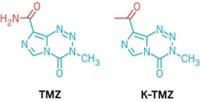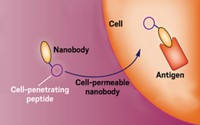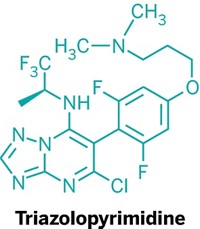Advertisement
Grab your lab coat. Let's get started
Welcome!
Welcome!
Create an account below to get 6 C&EN articles per month, receive newsletters and more - all free.
It seems this is your first time logging in online. Please enter the following information to continue.
As an ACS member you automatically get access to this site. All we need is few more details to create your reading experience.
Not you? Sign in with a different account.
Not you? Sign in with a different account.
ERROR 1
ERROR 1
ERROR 2
ERROR 2
ERROR 2
ERROR 2
ERROR 2
Password and Confirm password must match.
If you have an ACS member number, please enter it here so we can link this account to your membership. (optional)
ERROR 2
ACS values your privacy. By submitting your information, you are gaining access to C&EN and subscribing to our weekly newsletter. We use the information you provide to make your reading experience better, and we will never sell your data to third party members.
Biological Chemistry
Molecular Shuttle Could Help Drugs Find A Way Into The Brain
Drug Delivery: A peptide with the right stereochemistry could be a tool to carry drugs across the blood-brain barrier
by Katharine Sanderson
June 11, 2015

Picking the right stereoisomer of a peptide might help get small drugs into the brain more easily, according to a new study led by a team from the Institute for Research in Biomedicine, in Barcelona (J. Am. Chem. Soc. 2015, DOI: 10.1021/jacs.5b02050).
Meritxell Teixidó, Ernest Giralt, and colleagues were searching for peptides water-soluble enough to be carried through the blood but lipophilic enough to get across the fiendishly hard-to-cross blood-brain barrier (BBB). This dense layer of cells lines the brain’s capillaries and prevents most compounds from passing into the brain from the bloodstream. The team wanted to use the peptides as shuttles to carry small drugs into the brain as the peptides diffuse through the lipid bilayers of the cell walls that make up the BBB.
Previously, the group had designed a shuttle based on N-methylphenylalanine (N- MePhe), which was good at crossing the BBB, but was poorly water-soluble. To improve upon it, they designed a peptide made of four cis-3-phenylpyrrolidine-2-carboxylic acid (PhPro) molecules and measured its ability to carry two cargo molecules— L-DOPA and nipecotic acid—across a lab-made membrane that acts as an artificial BBB. The new shuttle carried sevenfold more cargo across the membrane than N-MePhe and was 1,000 times as water-soluble.
Furthermore, making the peptides out of different combinations of PhPro enantiomers revealed a surprise. Out of a library of 16 such shuttles, “there were some combinations of enantiomeric pairs that crossed differently” from others, Teixidó says. This could be because the crowded aromatic rings in PhPro make some combinations easier than others to squeeze through the tightly packed cells in the BBB, Teixidó suggests. Other peptide shuttles could be improved with the same enantiomer screening approach, she says, but whether the drugs will work in the brain when bound to the shuttles remains to be seen.





Join the conversation
Contact the reporter
Submit a Letter to the Editor for publication
Engage with us on Twitter